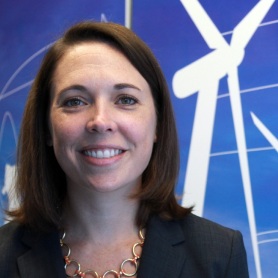[Editor’s note: Recently, the Australian Medical Association issued a position statement regarding wind turbines and health. In brief, the AMA claims that there is no evidence that wind turbines cause adverse health effects. What follows in an open letter to the Australian Minister of Health, the Honorable Peter Dutton, and to Senator Fiona Nash, criticizing the AMA, disputing its position, and supporting the governments decision to initiate independent research into the health impacts of industrial wind turbines. ]
March 23, 2014
Dear Mr. Dutton and Senator Nash,
Let me begin by congratulating you for taking the initiative to ensure that much needed research into the adverse health impacts from industrial wind turbines is undertaken. In this respect, Australia is truly leading the world.
Today, I write to you concerning the recently published statement by the Australian Medical Association. While we await the results of further independent study, this is a matter which I consider to be urgently important for public health policy in Australia and around the world. My first reaction to the AMA’s remarks was stunned disbelief. My second reaction was that history has begun repeating itself with amazing velocity. Allow me to explain.
In the spring of 2012, backed by financial enticements and enormous political pressures from the State of Massachusetts and the Governor’s office, a wind project began in my home town of Fairhaven. This project began over the vocal objections of many local residents and without any of the safeguards ordinarily required for industrial construction in a residential zone. During construction, the Massachusetts Department of Environmental Protection and Department of Public Health (MA-DEP) issued its now infamous report, entitled Wind Turbine Health Impact Study: Report of Independent Expert Panel.
I was immediately reminded of this report by the statement from the AMA. Though the Massachusetts report called itself a health impact study, no subjects were actually examined or even interviewed. Though it was purported to be a report by a panel of experts, none of its contributors had any recognized expertise related to turbine health impacts; and, by their own admission, none of them had ever conducted a single study in this area. Ostensibly, the study was about wind turbine noise, but not a single sound measurement was taken. From its inception, it was nothing more than a thin façade to hide the danger and lull the public into a false sense of security about turbines.
Meanwhile, two 1.5 Mw turbines were planted in the midst of very quiet, but densely populated residential neighborhoods in Fairhaven. Compared to most, this project seems very small, but it is uniquely hazardous because there are more than 6,000 residents living within the known radius of health impacts, some as close as 600 feet. In short, there are few places in the world where this many people are living this close to turbines this large. The Fairhaven project has generated some 700 formal, written complaints to the local Board of Health in just two years; yet, only now, when the impact is already plain for everyone to see, the Massachusetts legislature has decided to fund a real health study.
Since it was published, the Massachusetts report has been widely criticized by recognized experts as junk science, a veritable masterpiece of cherry-picking from publications primarily paid for by the wind industry itself. I suspect that the opinions expressed by the AMA are quite similar in this regard—merely pseudo-scientific opinionating. Despite the obvious defects of the Massachusetts “study,” and despite overwhelming scientific evidence to the contrary, the MA-DEP continues to cite it as proof that living near turbines is perfectly safe. It is being used, in my opinion, to fraudulently reassure the unsuspecting public that there is no risk. It is my grave concern that history is repeating itself. I’m confident that the groundless AMA claims will be used in the same way by an unscrupulous wind industry and its zealous proponents.
In writing this open letter to you, it is my hope that the Ministry of Health can benefit from understanding the mistakes made in Massachusetts and perhaps hold the AMA accountable for its irresponsible remarks. Even today, the MA-DEP report is used by pro-wind groups around the world to dismiss the harm caused by wind turbines, and to provide an authoritative justification for industry practices which lie at the root of an unending stream of human misery, illness, and home abandonment. You can find firsthand accounts of these impacts in Fairhaven here. You may be sure that the AMA comments will be utilized in a similar way, to rationalize further violations of the basic human right to health and to dismiss the suffering and legitimate complaints of residents forced to live amidst wind farms in rural Australia.
The flaws of the MA-DEP report and the AMA pronouncement are strikingly similar. Note, for example, that the AMA claims that “Wind turbine technology is considered a comparatively inexpensive and effective means of energy production.” Not only is this statement demonstrably false, it presupposes an expertise in energy production and economics which the AMA board can lay no claim to possess.
The AMA also echoes the tired refrain of the wind industry that “upwind turbines generate much lower levels of infrasound and low frequency sound.” This claim has been debunked by acoustic experts for many years now; but, again, the AMA lacks any credible expertise in acoustics, and fails to cite any studies by true acoustic experts that support this view—and it never will, because such studies do not exist.
Outrageously, the AMA imputes that “Individuals residing in the vicinity of wind farms who do experience adverse health or well-being, may do so as a consequence of their heightened anxiety or negative perceptions regarding wind farm developments in their area.” This explanation is patently ridiculous; it flies in the face of the obvious fact that most people who are now suffering from the symptoms of wind turbine syndrome had a very positive perception of wind farms initially—until they had firsthand experience of living close to them. Such perceptions must be very negative indeed to force whole families to abandon their multi-generational homes and farms in epidemic proportions. In several years of intense personal research about these health impacts, I have never found a single, quantitative study, by any reputable researcher that supports this explanation.
In Fairhaven, a good friend has suffered from intense tinnitus and debilitating migraines whenever the nearby turbines are spinning. Out of concern that she might foster an atmosphere of fear or anxiety for her ten year-old son, she shielded him completely from any discussion about turbines in their home. Imagine her despair when her son came downstairs late one night and said “Mommy, I can’t sleep because there’s a buzzing in my head and I feel dizzy.” What explanation does the AMA offer when someone suffers from health effects without any perceptions about wind farms at all?
You may rest assured that if valid scientific evidence existed to demonstrate that turbines are safe, the wind industry would trumpet it daily from every media outlet in the industrialized world. Such evidence simply doesn’t exist. This is not my opinion, but the result of the most extensive literature review ever undertaken on this topic, conducted by the Canadian doctors, Hazel Lynn and Ian Arra. After searching through millions of documents in almost every peer-reviewed journal in the English language, they found that there are NO studies in the world that prove there is NO association at all between turbine noise and health impacts.
To get to the bedrock truth about the real adverse health effects caused by wind turbines, I strongly urge the Ministry of Health to ensure that the proposed study is a multidisciplinary one that combines independent experts in acoustics, medical research (especially in the area of neurophysiology), and epidemiology. Unless careful measurements are obtained from the full sound spectrum, specifically including infrasound and low frequency noise and vibration, both indoors and out; the root causes of these impacts will not be captured. In addition, sound must be monitored in direct combination with standard, objective physiological measurements of subjects, such as EEG during sleep, heart rate, blood pressure, and stress hormones such as cortisol. Only when turbine noise and its direct impact on the body are observed together can the link between cause and effect be placed beyond dispute.
I realize that a study of this kind will be very costly, but not nearly as costly as the burgeoning health crisis that has been created by the willful ignorance of the wind industry and now the complicity of the AMA. Shouldn’t both embrace such investigations with open arms as an opportunity to prove what they have said all along? Or, are they already aware that very different conclusions will be reached?
In the absence of a bona fide health study, the Massachusetts report at least made a pretense of adducing evidence, but the AMA evidently expects Australians to blindly accept its findings based purely on its own authority. One might expect such a statement from the Vatican, but it strains credulity coming from an organization which takes the term medical as its middle name and which presumably embraces a foundation in science. Conveniently, the AMA offered no references for its opinion, so none can be disputed in the glaring light of day. To quote the U.S. Supreme Court Justice Louis Brandeis on matters such as this, “Sunlight is said to be the best of disinfectants.”
It is most telling that the AMA has chosen to advance a claim without providing a basis in evidence, rather than calling for a scientific study that could decide a matter of such supreme importance to public health on the basis of fact. Under these circumstances, it is only reasonable to demand that the AMA produce the evidence which support its “findings” so that they can be scrutinized and validated by other researchers and experts. In addition, if the AMA is advancing a medical opinion intended to influence public policy, it is also sensible to insist upon full disclosure of any influences, gifts, or other financial inducements from the wind industry, or other interested parties, that would constitute a legitimate conflict of interest.
Should the AMA prove unwilling to accede to these demands, it will have revealed the true nature and import of its opinion as nothing more an implicit product endorsement on behalf of the wind industry. It is remarkable to me that an organization founded by a profession whose primary concern should be the health and medical care of Australians, could make promotion of wind energy a top priority. In the future, perhaps the public will realize that AMA opinions deserve no more respect or credibility than those of any other industry PR group.
History is rife with shameful examples in which physicians have allowed their medical judgment to be distorted by undue industry influence. In the U.S., the influence of the tobacco and asbestos industries are perhaps the most notable, but there are many others. The wind industry is the latest entrant in this time-honored tradition of enlisting the help of physicians to cloak real health hazards in the mantle of greater public good. I have written at length about this comparison in my recent article: Is Big Wind the New Big Tobacco?
If left unchallenged, this unholy alliance between doctors and industry seems destined to produce a domino effect of damage to public health that extends far beyond the borders of Australia, just as the alliance of Big Tobacco and physicians has proliferated smoking-related illnesses around the world. In this regard, I believe we have common cause for action.
Respectfully yours,
Curt Devlin
Fairhaven, MA






